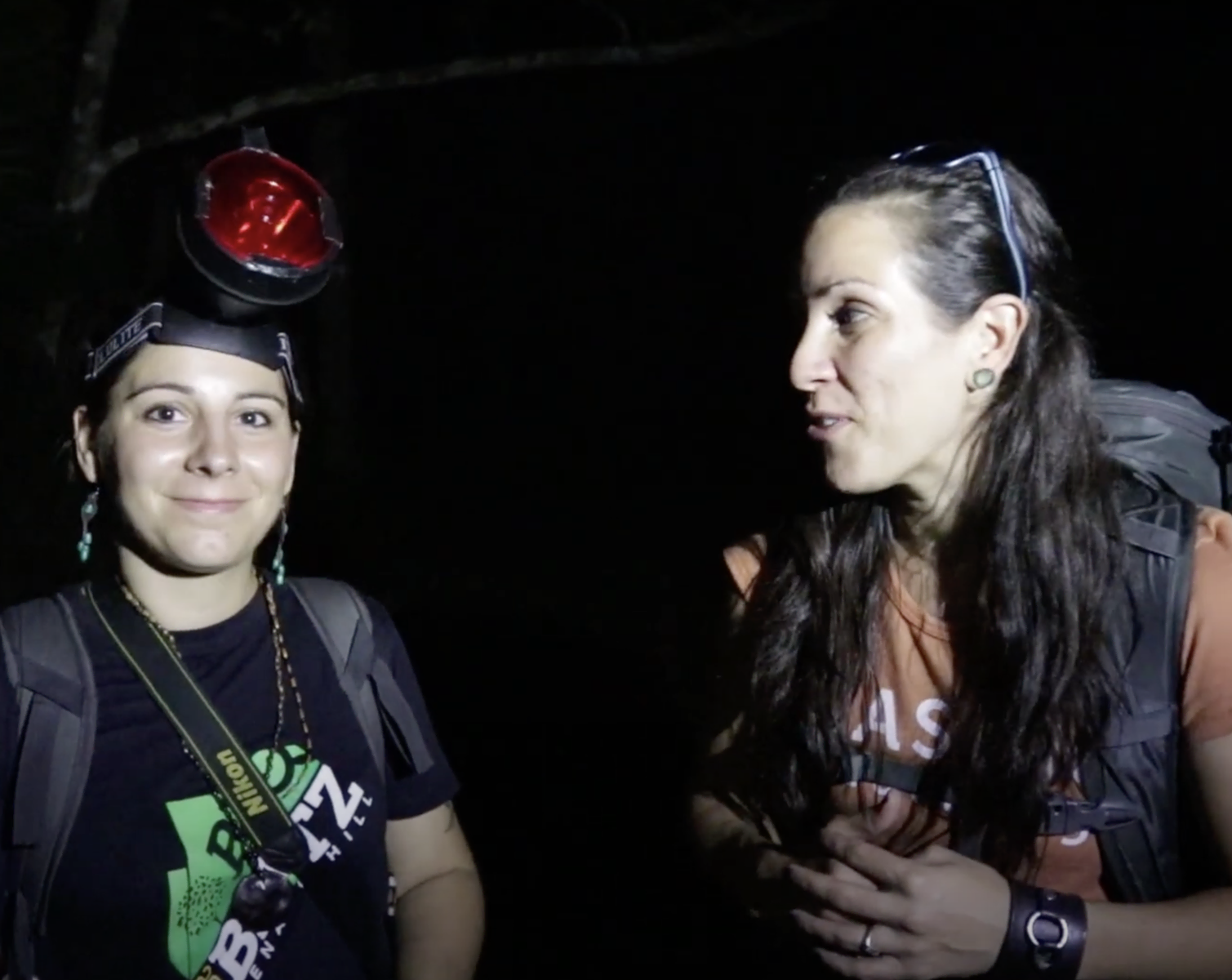It is early morning on the island of Borneo in east Malaysia, and the ancient rainforest is coming to life after the relative quiet of the night. It’s a veritable orchestra: the melodious music of a pair of gibbons, a warning trumpet from a solitary pygmy elephant, the rhythmic hooting of a helmeted hornbill, the rustling of dry leaves from an orangutan swinging high up in the trees.
In the midst of these routine, reassuring sounds, other sounds filter through. There is an unfamiliar chirp — a new species of bird? Occasionally, there comes a noise that does not belong in this ecosystem — perhaps the insistent buzz of a chainsaw? There may even be moments of silence, a sign of disruption in the usually bustling habitat.
The tropical rainforests of Malaysia are among the world’s oldest and richest in biodiversity. They are home to thousands of species of plants, insects, birds, mammals and reptiles, many of which have still not been studied adequately, or even discovered. And many of them are hurtling toward “threatened” or “endangered” status on the International Union for Conservation of Nature’s red list.

Scientists and researchers continuously monitor the flora and fauna in these jungles in order to ensure that the ecosystem remains healthy — in the face of threats from both natural disturbances and anthropogenic pressures (including climate change).
Now, they’ve added a new and effective tool to their arsenal: listening. Through bioacoustics research, researchers are tuning in to the sounds of the rainforests in Borneo and peninsular Malaysia to better understand and protect their biodiversity.
While traditional monitoring systems involve identifying and documenting species mainly by sight, bioacoustics uses technology to collate, identify and analyze sounds from all the living organisms within the ecosystem. Recording devices collect and convey real-time soundscapes from both primary forests (which have never been deforested and replanted) as well as areas where there is a lot of human activity in the form of logging and palm oil production. Taken together, these soundscapes are a reliable indicator of the health of the ecosystem.
Bioacoustics research may still be in its nascent stages (especially in Malaysia), but it has caught on across the world because it manages to capture data about birds and animals that are camouflage experts or near impossible to spot in the wild. And this method has another advantage: sounds are unique to species.
“Most animal species emit species-specific sounds, and so bioacoustics research can help to detect the presence and abundance of such species in the survey area,” says Dr. Nadine Ruppert, senior researcher and professor at the Universiti Sains Malaysia in Penang. “Even two bird species that look near-identical will have unique song patterns, which makes it easier to identify them by sound rather than sight,” she adds.
Scientists also say that bioacoustics — often used in conjunction with other traditional research methods such as camera traps, transect walks and satellite imaging — allows them to capture long-term data without having to check on the equipment or process frequently (or indeed, at all, given that these devices are solar-powered and can be left on and monitored remotely for a long time, in some cases even the entire length of the study). “The recorders can be put out in an area over several weeks, allowing wide coverage, reduced man-power, high efficiency and comparatively low cost as compared to human observations,” Dr. Ruppert says.

The more significant advantage to bioacoustics research is access: being able to listen in to the sounds of the forest at all times of the day and night, and in areas that can only be reached by long hikes through challenging terrain. Dr. Sarab Sethi from Imperial College London, who led the SAFE Acoustics Project (Stability of Altered Forest Ecosystem) in Sabah, Borneo, describes this as “the ease with which data can be collected on both a broad taxonomic scale as well as across long time periods and large spaces.”
While the SAFE Acoustics Project studied how habitat fragmentation affected biodiversity in the Sabah forests, the ongoing project in Penang in peninsular Malaysia has researchers creating a sound library that will be used to monitor the long-term impact of human intervention in the area, and eventually shape environmental policy.
Listening to the animals rather than trying to see them minimizes intrusion into the ecosystem, and works particularly well with species that shy away from even the lightest human presence. Dr. Ruppert cites the example of Malaysian gibbons: these small apes are shy and elusive, and quick to scamper into the thickets, making them tough to study. “With gibbons, bioacoustic surveys can help us to estimate group numbers in a given area or even distinguish the distinct calls of different individuals,” she explains.
Scientists are also using bioacoustics with nocturnal animals such as bats or Sunda colugos (known more fancifully as flying lemurs) that are difficult to detect visually, but can be studied through their ultrasound emissions. “We have now discovered that these animals do not live solitarily, as long suspected, but form social groups of several dozen in an area where they communicate using ultrasound, probably to warn each other from predators who cannot hear this frequency,” Dr. Ruppert says.
Ornithologist Dr. Loo Yen Yi and conservation biologist Lee Mei Yi, who have been working together on the Penang Hill project, point out that unlike visual surveys or camera traps, 360-degree audio recordings can be obtained from various levels of the landscape, from the forest floor to the tree canopies.

And beyond gathering information about the animals themselves, bioacoustic information can reveal threats to their habitats. “The device doesn’t record only animal sounds, but all sounds, like chainsaws, traffic, human voices and even wind and rain,” Dr. Loo says. This data is then used to train the AI model to pick up specific sounds like chainsaw noises or irregular vehicular activity, along with the location and time. “You can then send rangers with the information of where and when it happened, so they can check on the ground,” she says.
Audio data is also valuable in capturing abnormal silences, which could indicate that the subjects are under stress or moving away from their usual habitats. This methodology also helps to locate animals in places where they are not supposed to be. Talking about the increase in human-elephant conflicts, Dr. Loo explains that when elephants move into the edges of palm plantations (where there is a larger human presence), the sound data helps warn the people working there. “It will not stop the elephant from coming in, but at least you know that there are elephants in the area and you need to be alert and careful, so that it doesn’t take you by surprise,” she says.
Dr. Loo is candid about the fact that researchers in Malaysia are still figuring out all the ways in which soundscapes can be analyzed and used to understand the health of the ecosystem, and eventually help protect it. But by creating a library of soundscapes collected over a long period, they have already made great strides.
Dr. Sethi adds that above all, bioacoustics data enhances the ability to test hypotheses, plugging gaps where the data is available only on a small scale, from a specific region or period, and just not enough to compare across landscapes or seasons.
“You would be shocked and appalled by how much decision-making and policy in nature management is currently made based on very, very small sample sizes or quite often even just gut instinct, rather than any actual data,” he says, noting that bioacoustics can offer systematic, large-scale data that can aid in more robust, data-driven decision-making.
In Malaysia, where pristine rainforests have steadily been giving way to palm plantations, data from bioacoustics research could provide the much-needed impetus for better conservation and controls. For the first time, the endangered species will be able to speak for themselves.






